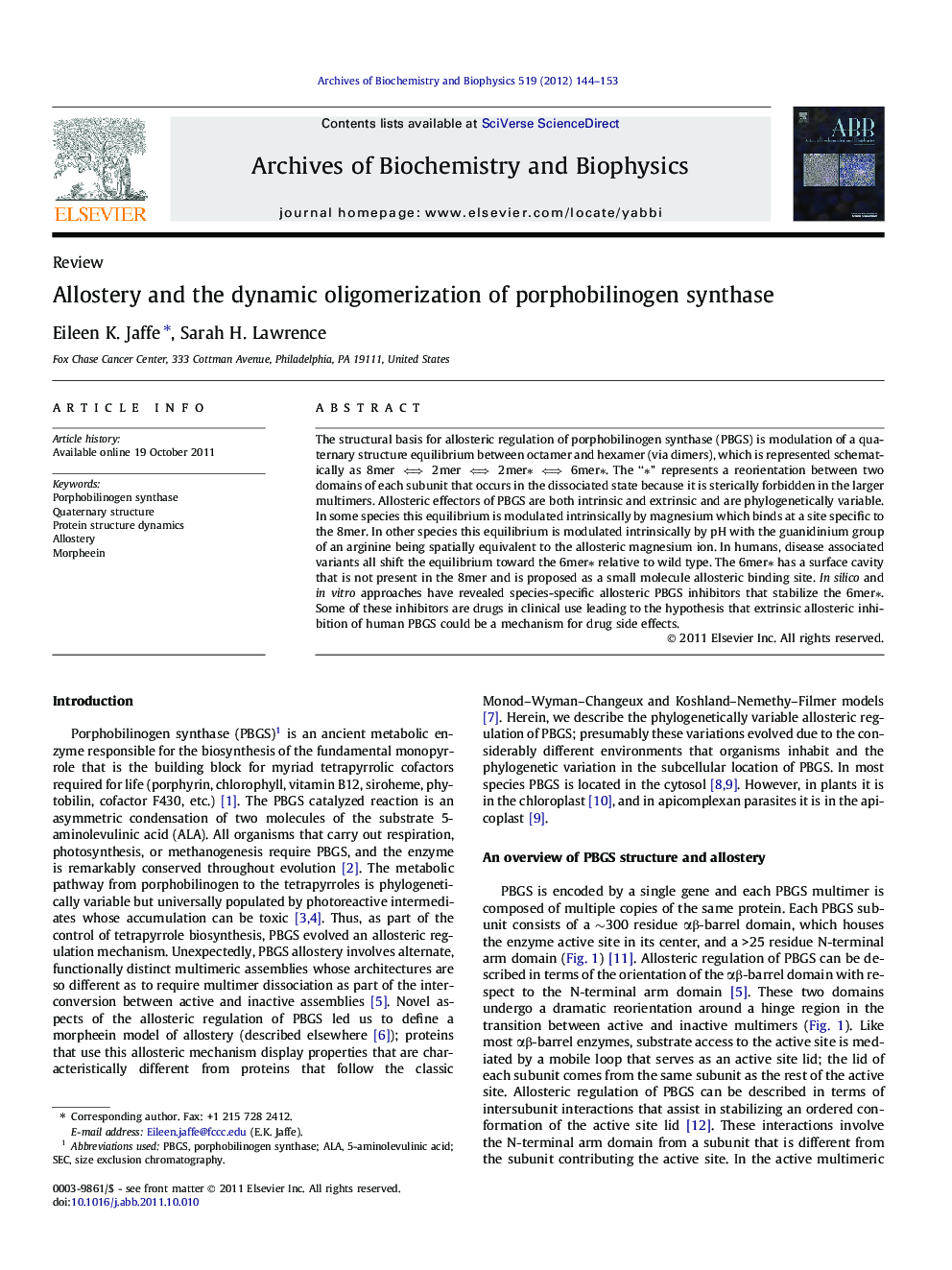| Article ID | Journal | Published Year | Pages | File Type |
|---|---|---|---|---|
| 1925606 | Archives of Biochemistry and Biophysics | 2012 | 10 Pages |
The structural basis for allosteric regulation of porphobilinogen synthase (PBGS) is modulation of a quaternary structure equilibrium between octamer and hexamer (via dimers), which is represented schematically as 8mer ⇔⇔ 2mer ⇔⇔ 2mer∗ ⇔⇔ 6mer∗. The “∗” represents a reorientation between two domains of each subunit that occurs in the dissociated state because it is sterically forbidden in the larger multimers. Allosteric effectors of PBGS are both intrinsic and extrinsic and are phylogenetically variable. In some species this equilibrium is modulated intrinsically by magnesium which binds at a site specific to the 8mer. In other species this equilibrium is modulated intrinsically by pH with the guanidinium group of an arginine being spatially equivalent to the allosteric magnesium ion. In humans, disease associated variants all shift the equilibrium toward the 6mer∗ relative to wild type. The 6mer∗ has a surface cavity that is not present in the 8mer and is proposed as a small molecule allosteric binding site. In silico and in vitro approaches have revealed species-specific allosteric PBGS inhibitors that stabilize the 6mer∗. Some of these inhibitors are drugs in clinical use leading to the hypothesis that extrinsic allosteric inhibition of human PBGS could be a mechanism for drug side effects.
Graphical abstractFigure optionsDownload full-size imageDownload high-quality image (258 K)Download as PowerPoint slideHighlights► Allosteric regulation of PBGS proceeds via a dissociative equilibrium of oligomers. ► Active 8mers interconvert with inactive 6mers: 8mer ←→ 2mer ←→ 2mer∗ ←→ 6mer∗. ► The “∗” is a rotation around a hinge that is sterically forbidden in 8mer or 6mer∗. ► The position and modifiers of the equilibrium are phylogenetically variable. ► Intrinsic and extrinsic regulators activate or inhibit by shifting the equilibrium.
